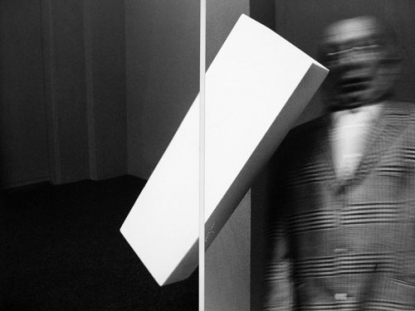At the Kolumba Museum of Art, Cologne, an ambitious exhibition titled der rote Faden: Ordnungen des Erzählens (The Red Thread: on Structures in Narration) attempts to mine a millennia's worth of objects spanning the spectrum from sacred to profane to explore how art tells stories. The concept and exhibition are highly experimental, juxtaposing works across media and centuries in an architecturally adventurous site. How did a museum funded and run by the Catholic Archdiocese of Cologne come host this most intellectually challenging of institutional projects?
The Kolumba has a long, winding history. Founded in mid 19th century to house and maintain religious, primarily gothic (and gothic revival) sacred works, it was initially led by the Christian Art Association for the Archbishopric of Cologne. By the 1920s its mission changed to include the acquisition of so-called "profane art" as well. Financing and ownership were taken over from the Association by the Archdiocese in 1989, causing a further rethinking of museum's mission. The full history is available here.
The museum building itself is worth the visit. Built on and around the ruins of a Gothic church and opened in 2007, Swiss architect Peter Zumthor has created a sleek, luxurious series of galleries full of floor-to-ceiling glass panels offering amazing glimpses of the city and an exclusive, clubby wood-panelled reading room that is a pleasure to inhabit, even if only for a few moments. Main galleries on three floors offer access to smaller exhibition rooms radiating from larger, central ones. These smaller galleries float four inches or so above the main gallery space, a triumph of design and engineering over matter.
The wealth and power of the church is on display at every turn, but what surprises is the breadth of works contained in the exhibition - from a chilling series of fifty prints by Otto Dix (der Krieg, 1924) describing the horrors of World War I trench warfare to a kinetic sculpture by Rebecca Horn (Berlin, Earthbound, 1994) of a found suitcase emblazoned with a star of David which flaps periodically toward heaven then descends again. The exhibition's mid-point is anchored by a series of twenty large narrative paintings (by Meister der Usulalegende und Werkstatt) on the life and work of St. Severin, the third bishop of Cologne, designed to instruct and uplift the pious illiterate of the 16th century.
While the lofty ambition of the exhibition's curatorial theme only partially succeeds, the works generally convey a nice tension between the material and the spiritual, the sacred and the profane. The aspirations of centuries-old Christian iconography, now crumbling under the weight of centuries but still somehow delicately fresh and sublime underscore this tension, as does a deadpan box-set of two small black volumes titled One Million Years by On Kawara (1999), that contains line after line of text enumerating each year. As if by design, the space itself joins into play with these themes, the aesthetic ambitions of the suspended side galleries' floors regularly causing museum goers to trip and stumble when entering and exiting them.
At the pinnacle of this series of exhibition rooms, German collaborative couple Anna and Bernhard Blume's work, Tranzendentaler Konstruktivisumus (Transcendental Constructivism) pits physical comedy against immaterial purity and physical comedy wins. Underrecognized in the United States, the Blume's work, always fresh and funny, takes the form of photographs, text, and sculptural objects that highlight the human body's futile attempts to conform to the hard edges, right angles, and awkward proportions of geometry. On display here are a series of photographs of bodies awkwardly sporting clothing emblazoned with minimalist geometric patterns that twist and pull under the strain of bellies and breasts, paired with manifesto-like excerpts quoting constructivists like Malevitch and abstract painters like Mondrian that herald the dematerialization of art. A second gallery displays another Blume series, blurred large-format black and white photographs, the result of a camera lens attempting to capture the absurd physicality of bodies in motion at the moment when things spin hilariously out of control. Works are mounted at awkward angles, too high here, too low there, crawling along the gallery floor, causing the audience to crane and squat in the process of viewing, as if to suggest that perhaps heaven lies in an embrace with that which is most fragile and flawed within ourselves.
On view now through August 2016
Curated by Stefan Kraus, Ulrike Surmann, Marc Steinmann, Barbara von Flüe
Kolumba Musuem Kolumbastraße 4 50667 Cologne
http://www.kolumba.de

